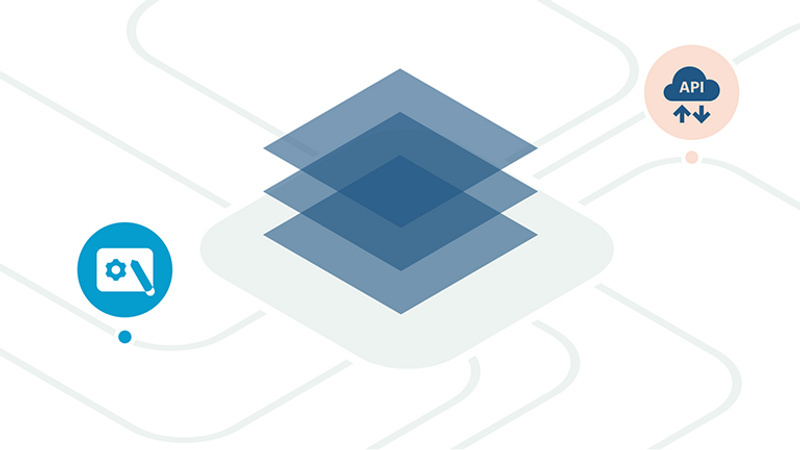3 Common Digital Transformation Trade-Offs Facing IT and Operations Leaders
Successfully meeting the demands of digital transformation requires the right mix of tools, people, and process

Leading any part of an organization will always require evaluating trade-offs and engaging in cost-benefit analyses. With the pace of digital transformation and cloud adoption accelerating faster than originally expected (in our recent study, 93.2% of organizations reported an increase in digital transformation initiatives since the pandemic) organizations are struggling with how to keep up — and faced with key decisions along the way that will dictate their success. Let’s address some of the common questions that many IT and Operations leaders are currently navigating:
Reskill, upskill, or hire?
Digital transformation is impossible without human transformation. As the processes and tools we use to deploy, monitor, and maintain infrastructure continue to shift and evolve, so do the types of skills needed of the humans doing this work. How should leaders look to fill gaps in knowledge and skills within their teams to meet these needs? While this will vary from organization to organization and team to team, understanding the nuances between these different options will enable leaders to determine the right mix to suit their requirements.
Upskilling refers to the action or process of teaching an employee additional skills, often to aid in their performance of their current role. Reskilling refers to the action or process of teaching an employee new skills that will enable shifting into a different role or position. While hiring is also an important part of this equation, there is a sizable gap between the demand for the skills needed and the quantity of labor available. According to the DevOps Institute’s Upskilling 2021 Enterprise Skills Report, “across IT, DevOps is consistently one of the fastest-growing and highest-value fields in the tech workforce. In the US, there were over 300,000 job openings requesting DevOps skills in the past 12 months.”
Upskilling and reskilling internally can help ease the burden caused by the talent gap, while also amplifying employee satisfaction and loyalty. It will also support recruitment efforts, as both a differentiating factor and a signal to prospective employees that you place value in continuous learning and development. If you are wondering where to start, begin with assessing the existing capabilities and gaps within your workforce. Then, map these to your organizational roadmap so that you have a clear picture of both where you are now and the direction you are headed.
Build or buy?
Our 2021 State of DevOps Automation study also found that organizations are experiencing a significant drain of resources, time, and money running complex, modern software development in production and developing custom bots/tools. In fact, 40% of organizations have 1 or more full-time engineers working on custom in-house tools or bots just for automating incident response. This, of course, is only one piece of the many complex operations and processes teams are taking on day-to-day.
If you are looking to cost measures to guide you in decision-making, you will likely need to go beyond mere accounting costs. Anyone who has studied economics is familiar with the concept of opportunity cost — the loss of potential gain from other alternatives when one alternative is chosen. In other words, opportunity cost is the value of foregone opportunities. It is important to evaluate the costs of a solution with a holistic view — asking not just what is the cost to build, but what is the cost to build, operate, monitor, and maintain? Is the custom in-house tool taking resources away from other important engineering or development work? Certainly. Every hour spent fixing an issue with a custom tool is an hour that could instead be spent on a feature for your customers and/or the business.
Additionally, the time taken to build the solution is also time you are unable to make use of this same solution. Outsourcing, however, will likely allow for more immediate opportunities to utilize the tool and mitigate toil, even if the solution is only initially 80% effective at addressing your specific needs. Given this, in many cases, buying a best-of-breed tooling solution and then using a subset of developer time to manage the gaps will end up being much more cost-effective in the long run.
No-code, low-code, or code?
It is clear that your toolchain can (and will) play a substantive role in managing your digital transformation efforts. Tools will also play a role in supporting your reskilling and upskilling efforts.
No-code tools will enable non-technical users to customize software without writing code directly. These tools usually have a user-friendly interface and drag-and-drop capabilities, allowing users to envision the implementation process and describe the overall logic with ease. Low-code options operate similarly and allow for an added level of flexibility. However, since they do require some technical know-how and coding skills, non-technical users will be left out of the operator seat. It will be important to pair the implementation of any low-code solutions directly with upskilling efforts of your current workforce in order to get the most out of these tools.
Since most organizations will have specific requirements that typically aren’t met with off-the-shelf platforms, there will still be a need for developer-focused customization capabilities that will provide the ability to shape a tool to suit your specific requirements, while also freeing up valuable engineering resources. We believe that in order to maximize your efficiency in meeting the demands of day-to-day operations, a combination of a no-code solution alongside the power of a developer-focused platform will be essential to getting the most ROI from your stack.
Finding a win-win solution
At Transposit, we’re on a mission to make life better for engineers, business leaders, and the people who depend on their services and expertise. We recognize that many organizations are grappling with how to best use their resources to balance the competing and ever-growing demands facing their engineering and operations teams. Operational maturity requires a solution that enables visibility, context, and actionability, alongside a culture that is focused on continuous learning and improvement.
Transposit offers a solution that enables the flexible and powerful customization that DevOps and ITOps teams need. Our pre-built integrations with over 200 services equip teams to shape processes to fit their unique requirements and diverse stacks right away, freeing up time to focus on building for the business. We also combine both a no-code runbook builder and a developer platform for deeper customization, allowing anyone across development and operations to automate processes, reduce toil, and get work done faster. Want to learn more about Transposit? You can request a demo here.




